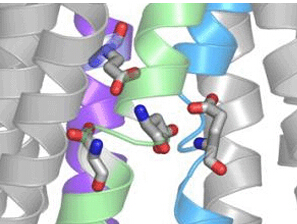In 1806, French chemists Louis-Nicolas Vauquelin and Pierre Jean Robiquet isolated a compound in asparagus that was subsequently named asparagine, and then the first amino acid was discovered. Generally, amino acids have already been regarded as biologically important organic compounds that contain amine and carboxylic acid functional groups. Specifically, they are usually along with a side-chain specific to each amino acid.
 Actually, with the advance of modern biotechnology, a wide range of chemical substances have been discovered for the further development of modern clinical applications, such as peptides, amino acids, antibiotics, and so on. While as for amino acids, the key elements are carbon, hydrogen, oxygen, and nitrogen. However, there are some other elements can be found in the side-chains. In terms of the rapid development of amino acids, nearly five hundred amino acids have been known for people, which can be divided into wide categories based on different functions. For example, they can be classified in terms of the location of core structural groups, they can also be classified for the relation with polarity or side-chain type.
Actually, with the advance of modern biotechnology, a wide range of chemical substances have been discovered for the further development of modern clinical applications, such as peptides, amino acids, antibiotics, and so on. While as for amino acids, the key elements are carbon, hydrogen, oxygen, and nitrogen. However, there are some other elements can be found in the side-chains. In terms of the rapid development of amino acids, nearly five hundred amino acids have been known for people, which can be divided into wide categories based on different functions. For example, they can be classified in terms of the location of core structural groups, they can also be classified for the relation with polarity or side-chain type.
Anyway, massive definitions can be used in the process of classification. Amino acids have developed an important role in recent years, namely comprising the second-largest component of human cells, as well as some certain tissues. On the other hand, they also help the process of neurotransmittertransport and biosynthesis to a large degree. Since amino acids are so important for people, they have been stressed a lot, but related concerns are increasing now because of their particular functions in modern technology. They can be helpful in assisting researchers discover more available biotechnological products, such as synthesis and phosphorylation. In addition, amino acids have played critical non-protein roles within the body as well. Taking the human brain as an example, the standard amino acid glycine is used in red blood cells, and the non-standard carnitine is used in lipid transport.
Considering their biological significance, amino acids are important in nutrition. They will be commonly used in nutritional supplements, fertilizers, and food technology in the future. Industrial uses include the production of drugs, biodegradable plastics, and chiral catalysts can also be the applicable areas. Maybe a new era for amino acids is upcoming.